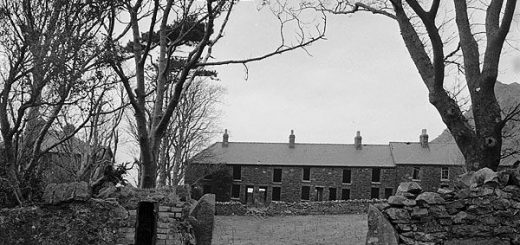Tancred Hospital
In the village of Whixley is a large house that once belonged to the Tancred family. The last heir to this family stated in his Will that he was not to be buried underground and instead that he was to be interred in the family home, which he was. His coffin became a point of local interest and speculation arose that his ghost must haunt the house, though there is no evidence of this. Edmund Bogg, the folklorist mentions the Tancred inheritance in the following exert from his book ‘From Edenvale To The Plains Of York or A Thousand Miles In The Valleys Of The Nidd and Yore.’ Which dates from the late 19th century.
‘..a younger branch of the [Tancred]family dwelt at the red-bricked Elizabethan manor house, which still stands adjoining the churchyard. The last of this branch was Christopher, who died in 1764 (Note: This date should be August 1754), and left his house and estate for the maintenance of twelve decayed gentlemen. In one of his wills, made when at Cambridge, he requests that if he should die at the above place, he wills to be buried there; but if in Yorkshire, then inside his beloved ancestral seat, and always to remain un-interred ; so, for many years, his coffin was hung in chains on the north wall of the large hall, and we can easily understand the belief of the villagers that the ghost of Tancred would have often been seen wandering round the precincts of the old Hall. It is said that if the coffin was moved the bones of the dead man used to rattle, and it was considered great fun by the younger generation of that period to rattle old Tancred’s bones, until it became a saying in the village, “to rattle like ‘ Tancred bones.’ ‘ Eventually, the coffin was removed into the cellar of the house.* [* The village mason told us that, many years ago, he remembered the coffin being so much decayed that visitors could put their hands in and touch the hair, some of them even taking it as a curiosity.] The delight of one of the old pensioners at this period was to collect a number of schoolboys and take them to see it, when he would suddenly blow out the candle and rattle loudly on the coffin lid with his stick, the result being a general shrieking and scamper up the steps to the daylight. There is a tradition which is still rife amongst the villagers, for they tell the stranger, with all seriousness, that when old Tancred gets buried then the heirs will have their own again, meaning buried outside the house, in the church. This was nearly accomplished some years ago. The coffin had been taken out of its vault, and all arrangements made for its re-interment. It is said in an hour or so more the task would have been accomplished. At this juncture of affairs a telegram was received from the proper authorities insisting on the body remaining in the Hall. The coffin was not taken back to the vault, but into the private chapel of the Hall, and thus, in his beloved ancestral home, after much turmoil, the remains of Tancred still rest, under a large sarcophagus. The twelve gentlemen who partook of the charity were to be unmarried, and upwards of fifty years of age; four each from the three learned professions, each having separate apartments, but dining at the same table. There were certain laws and regulations to be adhered to which were often broken; moreover, certain feuds arose while discussing questions at the dinner table, so at present the partakers of the charity reside elsewhere, and the Hall is now the abode of Mr. Chapman.’
The will of Christopher Tancred (born 11 Nov 1689 at Whixley) also catered for eight scholarships at Christ and Caius Colleges, Cambridge, though to his five sisters, whom he had a dispute with, he left one shilling each, which he said was “more than they deserve or even can reasonably expect”. The five sisters, Catharine Tancred, Dorothy Lambert, Ann Tancred, Elizabeth Dobson and Ursula Tancred were turned out of doors without any financial support. They unsuccessfully challenged his will, in November 1757 and the Charities set up by the will were recognised in 1762 by an Act of Parliament.
I found a mention that a report from the 1920’s suggests the coffin now resides in the nave of Whixley Church, still above ground, though where it is now I am unsure.




Recent Comments